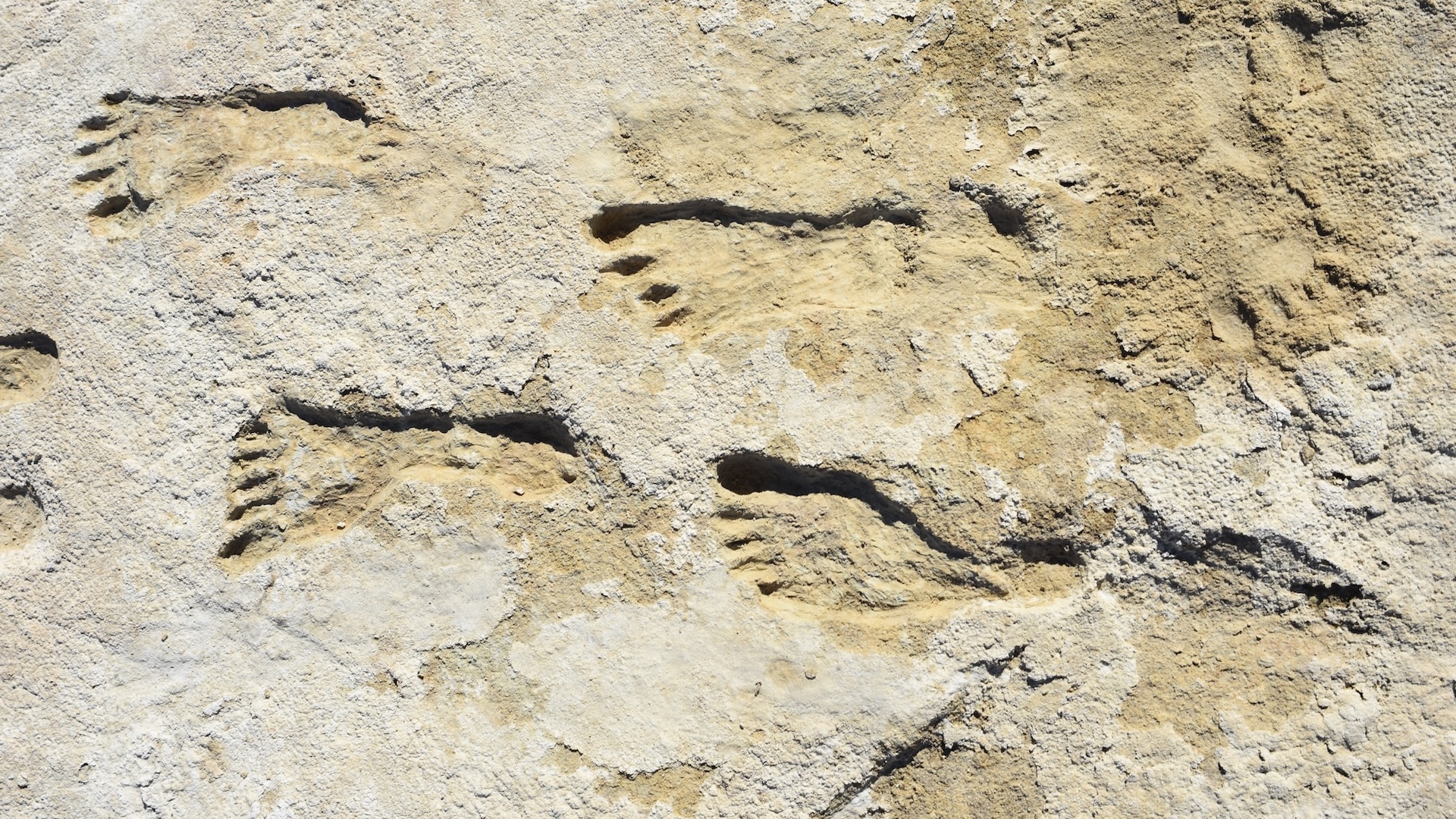The age of “rarely preserved” ancient human footprints dotting the landscape at White Sands National Park in New Mexico has been hotly debated for years. Now, a new study has found that these footprints really are around 23,000 years old — but the date isn’t accepted by everyone.
If the 23,000-year-old age is accurate, it would mean that humans were in North America around the peak of the Last Glacial Maximum, the coldest part of the last ice age — far earlier than archaeologists had previously thought.
In the new study, the researchers radiocarbon-dated organic sediment in core samples from the site, which provided dates for the footprints as well as for the entire paleolake and river system that once existed there. The analysis was done in labs unaffiliated with earlier studies.
“Our data supports the original data” that dated the site to 23,000 years ago, study first author Vance Holliday, a professor emeritus of anthropology and geosciences at the University of Arizona, told Live Science. “Plus, we now have an idea of what the landscape was like when people were out there.”
The saga of dating the roughly 60 footprints goes back to 2021, when a study reported the discovery of the footprints and dated them to between 21,000 and 23,000 years old. However, a 2022 rebuttal took issue with using the seeds of ditch grass (Ruppia cirrhosa), a water plant, for radiocarbon dating. Water plants get their carbon from underwater, which can be much older than carbon from the atmosphere. This can skew the levels of carbon 14, a radioactive version of the atom, in the samples, making the plants appear older than they really are.
So, in 2023, researchers redated the site with optically stimulated luminescence (OSL) dating, which revealed when quartz or feldspar grains in the tracks were last exposed to sunlight, and radiocarbon dating of ancient conifer pollen from the footprint layer — which proved to be another way to use carbon 14 without relying on water plants.
Related: The 1st Americans were not who we thought they were
Again, the scientists found that the footprints were 21,000 to 23,000 years old. While some scientists called the results “very convincing,” others, including those who wrote the 2022 rebuttal, were still wary of the results, saying the samples weren’t taken from the right layer.
Now, the new study offers more evidence that the footprints date to the Last Glacial Maximum, when the area was a vast wetland inhabited by ice age animals. The footprints likely came from hunter-gatherers who arrived in the Americas after traveling along the Bering Land Bridge, which connected Siberia and Alaska when sea levels were lower, research suggests.
For decades, researchers thought the earliest Americans were the Clovis, who lived in North America around 13,000 years ago. But the footprint discovery and others are slowly revealing that Indigenous people reached the Americas much earlier than thought.
A new look at White Sands
Holliday has been working at White Sands since 2012, and some of his data was used in the original 2021 study, making him a co-author, he noted. This time, Holliday and his colleagues radiocarbon-dated mud cores from the site. They found that the trackways date to between 20,700 and 22,400 years ago, which closely matches the original dates.
When added together, there are now a total of 55 radiocarbon-dated samples of mud, seeds and pollen from the footprint layer that support the 21,000- to 23,000-year-old dates, Holliday said.
Ancient human footprints are “so rarely preserved,” he said. And now, scientists have “dates on three different materials that all coincide” on a time for these tracks.
“You get to the point where it’s really hard to explain all this away,” he said in a statement. “As I say in the paper, it would be serendipity in the extreme to have all these dates giving you a consistent picture that’s in error.”
However, more work is needed to securely date the footprints at White Sands, said Michael Waters, director of the Center for the Study of the First Americans at Texas A&M University, who was not involved with the study.
“Even with these new data, I remain concerned about the radiocarbon ages generated to date the footprints at White Sands,” Waters told Live Science in an email. He reiterated the known Ruppia issue, saying the radiocarbon dates “are likely too old” because the plant got its carbon from the water. In fact, the same underwater carbon issues could have also affected the sediments dated in the new study, he said.
“The new ages on bulk organic sediments presented in this paper are interesting, but it is unclear about the origin of the carbon being dated,” Waters said.
Furthermore, Holliday and his colleagues acknowledge that their study doesn’t address another hot-button issue: Where are the artifacts or settlements from these ice age people at White Sands?
That question remains to be answered, Holliday said. But it’s unlikely that hunter-gatherers would have left behind valuable items in the short time it took them to trek around the wetland.
“These people live by their artifacts, and they were far away from where they can get replacement material,” Holliday said in the statement. “They’re not just randomly dropping artifacts. It’s not logical to me that you’re going to see a debris field.”
